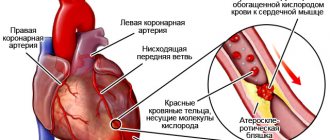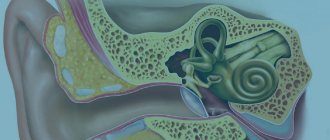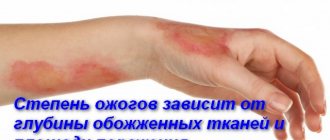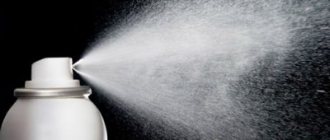Sore throats (tonsillitis) are infectious pathologies that affect the lymphoepithelial ring of Pirogov, but primarily the palatine tonsils. The tonsils (palatine, tubal, pharyngeal, lingual), forming the Pirogov ring, are accumulations of lymphoid tissue that perform the function of the primary filter. The oral cavity and nasopharynx are the most common infection gates. Therefore, most of all pathogenic bacteria and viruses that enter the body are retained by these masses of lymphoid tissue.
Children, due to natural age-related underdevelopment of the immune system, are approximately 2-3 times more vulnerable to sore throats than adults. Environmental crises and sharp temperature changes in conditions of low humidity (dominant conditions in Russian cities) have led to the fact that in some regions of the Russian Federation, tonsillitis accounts for 20% of the total number of all diseases in the region. In cities, it is increasingly noted that half of all sick children suffer from sore throat (especially during the cold season).
Varieties and atypical forms
The main classification divides tonsillitis according to how deep the infection has penetrated into the tonsils, and how far the inflammatory and purulent process has gone:
- Catarrhal form - only the upper epithelium of the palatine tonsils is affected, the mildest option, as a rule, there is no purulent exudate.
- The lacunar form is the main reservoir for the accumulation of the pathogen here, the tonsil grooves (lacunae) and their deepest endings (crypts), easily recognizable by the branched purulent pattern on the tonsils, repeating the directions of the lacunae (later the entire surface of the tonsils can become covered with pus).
- Follicular form - often observed with increased looseness of the tonsils, when the lymphoid tissue includes many voids (another reservoir for the accumulation and reproduction of an infectious agent), here the main focus of inflammation is located in the follicles, lymphoid “nodules” of the tonsil parenchyma, recognizable by point purulent accumulations on the tonsils.
- The phlegmonous form (intratonsillar abscess, paratonsillitis) is one of the most severe and quite dangerous forms, characterized by the fact that inside one of the palatine tonsils (precisely one!) the rapid formation of purulent exudate begins, which leads to an abscess protruding into the lumen of the throat. Treatment is almost always exclusively surgical (puncture, incision, tonsillectomy); it occurs much less frequently in children than in adults.
- The ulcerative-membranous form (Simanovsky-Plaut-Vincent angina), in which small superficial ulcerative erosions of a grayish and greenish color are recorded, occurs as a result of the symbiosis of opportunistic bacteria: the spindle-shaped bacillus Plaut-Vincent and the spirochete Vincent.
Sometimes the lacunar and follicular forms are considered as one. Because they are characterized by mutual transitions and simultaneous occurrence.
According to another classification, tonsillitis is considered either acute or chronically recurrent. The acute form is characterized by a primary attack. But this does not mean that the infectious agent has never entered the body before. It’s just that during the last attack the immune system completely destroyed it. Chronic course means that the pathogen settles in a certain amount in the tissues (in the lacunae and loose structure of the tonsils). Gradually, this amount of pathogen ceases to be a threshold irritant for the immune system (the phenomenon of resistance), triggering an adequate cascade immune response.
In children under 5 years of age, the lymphoid tissue in Pirogov's ring is not yet fully formed. For this reason, the scenario of tonsillitis here has some features. There is no or almost no purulent exudate even with extremely severe inflammation. The transition to chronicle, as such, does not occur due to the small number of “reservoirs” for the pathogen. But due to such underdevelopment of the primary filter, the infection more easily penetrates further into the body, provoking other diseases (bronchitis, pneumonia, meningitis, etc.). Plus, the current itself suddenly becomes very severe with temperatures above 39 degrees.
The chronic form is quickly determined by an otolaryngologist based on several signs:
- the last case of tonsillitis was six months ago or less, and over the past 2 years the patient suffered from tonsillitis several times;
- the structure of the tonsils is loose, the lacunae are expanded and well visualized;
- when pressed with a spatula, a cloudy exudate emerges from the lacunae;
- in the general blood test, a constant shift in the leukocyte formula is noted: moderately increased lymphocytes/leukocytes, increased ESR;
- the patient complains of constant mild malaise, frequent colds, low-grade fever in the evening;
- Children often develop regular gastrointestinal disorders, pain in the chest and in the heart area, and joint pain.
In general, in children under 10 years of age, chronic tonsillitis is not so much a smoldering focus of infection in the body, but a general weakness and vulnerability of the immune system, which is why a small amount of pathogenic microbes constantly entering the body regularly provokes new tonsillitis.
What causes sore throat in children?
Knowledge of the mechanism of infection and the development of harmful bacteria allows us to determine why a child may get sick.
The tonsils are a kind of filters of the body; it is in them that the detection and destruction of foreign microorganisms occurs. But often the volume of pathogenic flora in them exceeds the permissible norm, provoking an inflammatory process. There are many reasons why sore throat occurs in children:
- malnutrition;
- lack of vitamins;
- low physical activity;
- lack of walks in the fresh air.
If the child’s immunity is weakened, any local or general cooling can trigger the growth of microbes in the mouth and tonsils. Infection occurs very quickly, so it is important to keep your baby’s contact with infected people to a minimum.
However, angina can develop not only as an independent disease. It often occurs as a result of inflammatory processes in other organs. A sore throat can be caused by otitis media, sinusitis, sinusitis, etc.
Sore throat in children is dangerous because its incorrect treatment leads to hidden inflammation of the tonsils, and the baby may develop a chronic form of tonsillitis. In addition, there is a high risk of complications that impair the functioning of the heart, kidneys, and vascular system, and severe allergies can also develop.
Causes of sore throat
For absolutely all ages, the root cause of tonsillitis is always the same - weakening of all immune defense systems (cellular and humoral). This is especially true for the generation of B lymphocytes and their differentiation into plasma cells, which provide the body with antibodies (immunoglobulins). Since this is the main antibacterial defense, and the most severe attacks occur with bacterial tonsillitis. Due to the accumulation of purulent exudate, melting the surrounding tissue. With viral tonsillitis there is no pus.
"Anginotic" bacteria:
- hemolytic streptococcus (about 40% of all sore throats and about 80% of all bacterial sore throats) and sometimes other streptococci;
- staphylococci, especially Staphylococcus aureus;
- Haemophilus influenzae (occurs quite rarely in sore throats);
- Even more rarely, the disease is caused by pathogens that are uncharacteristic for it - meningococci and pneumococci;
- extremely rarely, the causative agents are atypical pathogens, such as Bacillus anthracis (anthrax), Salmonella enterica (typhoid fever), etc.
"Anginotic" viruses:
- herpes viruses (the first two types and CMV);
- some types of enteroviruses, for example, Enterovirus J, Rhinovirus A;
- influenza virus (different strains).
There are a number of background factors that lead to weakened immunity:
- Recent infections of any etiology, chronic infections - sore throat often comes after the flu, bronchitis, and such severe chronic conditions as the immunodeficiency virus, tuberculosis or hepatitis C, B create constant favorable conditions for the development of secondary infections.
- Chronic foci of inflammation in the body (with autoimmune pathologies, allergic reactions) intensify any other inflammatory process.
- Immunosuppressive treatment of autoimmune diseases leads to a weakening of the immune defense.
- Chemotherapy and radiation therapy for oncology.
- Hormonal imbalance in the body of any etiology: in childhood, disorders of the hypothalamic-pituitary system are detected, congenital diabetes with symptoms similar to type 1 diabetes and other ailments, long-term use of glucocorticosteroids in large doses is also dangerous.
- There is no doubt that the children's body is much more sensitive to the negative influence of the industrial zone; in dirty cities (Magnitogorsk, Norilsk, Krasnoyarsk, Novokuznetsk, etc.) the incidence of tonsillitis in children is very high.
- But the situation with stress is controversial - a number of doctors, including child psychotherapists, believe that the flexibility of the child’s psyche makes it possible to mitigate the negative impact on psychosomatics, while adults experience stress longer and more severely (but this does not mean that constant psychological blows cannot affect the physical child's health).
Separately, it is worth mentioning the individual anatomical and physiological characteristics that contribute to tonsillitis. These are abnormally deep tonsillar lacunae (an excellent “reservoir” for storing the pathogen). Impaired breathing (the disinfecting effect of air oxygen is reduced, there is an increased secretion of mucus, general oxygen deficiency develops) with severe curvature of the nasal septum, chronic rhinitis/sinusitis and asthma, pronounced looseness of the tonsil parenchyma (voids in the lymphoid tissue are a second “reservoir” for infection).
It is sometimes mistakenly believed that the condition of the tonsils can be determined by their size. But there is no correlation here. Pathogens can also persist in small tonsils. In addition, in childhood, the tonsils are always larger and reach their maximum size at about 7-8 years. This is a physiological feature.
Causes and mechanism of development
Remember. The cause of a sore throat is always an infection. 90% - streptococcus. 5% are viruses. In 5% - other pathogens.
The triggering factor in the development of the disease is a decrease in immunity in the tonsil itself.
Reasons for this process:
- general hypothermia (cold, wet feet, etc.),
- local hypothermia (ate ice cream),
- carious teeth,
- other diseases that have caused a decrease in immunity (pneumonia, major surgery, etc.)
In the photo: the structure of the tonsil in section - folds (lacunae) are visible
Let me remind you: the tonsil is part of the body’s immune system, which constantly fights infection. the infection can enter the tonsil both from the environment (with food, for example) and through lymphatic vessels (for example, from a carious tooth).
If immunity in the tonsil is reduced, the bacteria or virus begins to actively multiply, releasing toxic substances into the surrounding tissues. The surrounding tissues begin to react, and a struggle arises between the infection and the body's defense cells. This results in tissue swelling, redness, squeezing, pain when swallowing and fever.
Important: if your immune system is strong enough, it can resist any infection, including streptococcus.
Symptoms
In children, symptoms are usually pronounced and fully expressed. Unlike an adult, a child is not strong enough to endure tonsillitis on his feet.
All sore throats are characterized by the following symptoms:
- sharp pain in the throat, reaching dysphagia (inability to swallow), hyperemia and pain are noted first in one tonsil, and then cover the entire throat;
- a sharp increase in body temperature to pyretic values (above 39) within a few hours; after sleep, the temperature may drop noticeably, but in the evening it rises again;
- if a sore throat is present in its pure form, without inflammation of the larynx (laryngitis), then a very characteristic picture is observed - the absence of cough and hoarseness;
- with the development of lacunar/follicular tonsillitis, already on the second day, yellowish and whitish purulent discharge can be observed on the tonsils, which can be easily removed with a spatula and washed off by rinsing or a stream from a syringe;
- in children, the lymph nodes are especially noticeably enlarged: cervical, axillary, inguinal;
- also in children, sore throat often provokes diarrhea, abdominal pain, severe headaches, disorientation and pain in the limbs.
A separate item is phlegmonous tonsillitis. Peritonsillitis almost never occurs immediately “from scratch.” It is preceded by a chronic course of another sore throat. But it can be immediately identified by one characteristic sign: on about 2-3 days, a rapidly growing swelling is registered on the side of the right or left tonsil (but never at the same time!). This is a purulent abscess. An abscess is considered mature if a purulent tubercle is visible on it. Some otolaryngologists advise that in case of phlegmonous sore throat, do not act on the throat in any way so that the abscess matures as quickly as possible.
Symptoms of a sore throat
A sore throat in children can be confused with a cold, but the attending physician, when examining the throat and other symptoms, will be able to differentiate the disease and tell what to do in such a situation. There are common signs of tonsillitis in a child that are present in all forms of the disease:
- Difficulty and pain when swallowing
- Hoarse "barking" cough
- The voice becomes hoarse or disappears altogether
- When palpating the throat, a painful reaction is noted
- Increased temperature (by 1–1.5°C)
- Headache
- Red throat, possibly with a white coating on enlarged tonsils
PHOTO
Typical picture of lacunar tonsillitis. The purulent “paths” have already begun to merge into a single film.
Content may be difficult to view
Catarrhal tonsillitis in the photo below is recognizable by the absence of pus against the background of severe hyperemia. However, diagnostic clarification is required, since sore throat can be viral.
Content may be difficult to view
Follicular tonsillitis. Characteristic, pinpoint abscesses are visible on the surface of the tonsils.
Content may be difficult to view
Phlegmonous tonsillitis, paratonsillitis. A characteristic protrusion on the side of the left tonsil. Here the abscess has not yet matured (no pus is visible).
Content may be difficult to view
Simanovsky-Plaut-Vincent tonsillitis (ulcerative membranous tonsillitis). Films of a dirty brownish and grayish color are found on the surface of the tonsils.
Content may be difficult to view
Possible complications
The main danger of angina is the frequent risk of complications. They can be divided into local (developing within the tonsils) and general (affecting the entire body: kidneys, joints, heart). Let's list them:
- Peritonsillitis.
- Purulent cervical lymphadenitis.
- Acute post-streptococcal glomerulonephritis and otitis media.
- Rheumatism.
- Sepsis.
- Myocarditis.
Their treatment sometimes requires emergency surgery and massive antibiotic therapy. Otherwise, death is possible in the acute phase. That is why early and proper therapy for streptococcal tonsillitis is necessary.
Diagnostics
Due to the severity and nature of the symptoms, even a pediatrician makes the correct diagnosis in 95% of all cases. A clinical examination by an otolaryngologist will only confirm it. Occasionally, differential diagnosis is required to exclude diseases with similar symptoms. For example, diphtheria. But with it, the palate becomes covered with a grayish film that is difficult to remove.
In general, diagnosis for angina is of a clarifying nature:
- A swab from the throat - to determine the specific pathogen and conduct an antibiogram (detection of the sensitivity of the bacterium to a particular antibiotic).
- General and biochemical blood test - to determine the general condition of the patient, check for complications (biochemistry shows the functioning of internal organs).
- X-ray - needed for phlegmonous tonsillitis to determine the boundaries of the abscess and identify possible migration of purulent masses.
Description of the pathology and its causative agents
Angina has been known since ancient times. According to sources, its name comes from the Greek word “angere”, i.e. squeeze, squeeze. These are the sensations a sick person feels when an inflammatory process in the throat begins. Most often, the pathology affects the palatine tonsils, but can also spread to nearby tissues: tongue, throat, nasopharynx. Depending on this, sore throat is divided into lingual, laryngeal or nasopharyngeal.
Varieties of sore throat are directly related to pathogens that cause the pathological process. Inflammation is usually caused by bacteria, but fungi and viruses are also found. The main causative agent of the disease is group A beta-hemolytic streptococcus. It contributes to the occurrence of the most dangerous type of pathology. Firmly attached to the mucous membrane of the tonsils, the microorganism releases a large amount of toxins that have a negative effect on the kidneys, muscles and joints of the sick person.
Streptococcus is highly resistant to the immune cells of the body's defense system, so it is difficult to treat and can cause late complications. On the 9th-10th day, a child, especially a weakened one, may begin to show signs of impaired functioning of the kidneys or heart, and a rheumatic fever may occur.
Pathogens enter the baby's body through airborne droplets when communicating with a sick person or through household items. Often the disease is caused by the activation of one’s own streptococci, which live in the nasopharynx of every person. For some children, just getting their feet wet or eating something cold causes a sore throat to appear the next day.
Factors such as a general decrease in immunity, chronic purulent processes in the sinuses (sinusitis), caries or sudden changes in air temperature can lead to the occurrence of tonsillitis.
In addition to streptococcus, the most common causative agents of the disease are staphylococci, rhinoviruses, adenoviruses, herpes viruses, etc.
Treatment
Determined by the severity of the patient’s condition and the form of sore throat. For catarrhal, lacunar, follicular and ulcerative membranous tonsillitis, conservative treatment is typical. Peritonsillitis in 95 out of 100 cases requires more radical measures - a puncture or incision of the abscess and, in case of relapse, tonsillectomy.
Conservative therapy includes:
- Physiotherapy.
- Systemic drug treatment (oral/parenteral administration of antipyretic, analgesic, antiviral and antibacterial agents).
- Local drug treatment (rinsing, irrigating and lubricating the tonsils).
- Folk remedies.
Physiotherapeutic treatment
Considered only as an additional method of treatment. And it is used exclusively in the recovery phase. Although some methods are as effective as medications (for example, quartz tube). Physiotherapy for tonsillitis comes down to various options for the impact of electromagnetic waves directly on the tonsils themselves or indirectly through the surrounding tissues.
Children may have contraindications to such procedures. Namely: increased photosensitivity, melanocyte vulnerability to ultraviolet radiation, tuberculosis of any kind, oncological processes, severe heart and/or renal failure, epilepsy. The pediatrician or pediatrician who regularly observes the child must make appropriate entries in the medical record.
The main options for physiotherapy for tonsillitis:
- Tube quartz. Direct exposure of the tonsils to ultraviolet radiation with a wavelength from 10 to 400 nm (short-wave radiation). The procedure involves holding a light tube in your mouth for 2 to 7 minutes. Sometimes the tube has a curved tip so that the child can alternately direct the radiation first to one and then to the other tonsil (the medical staff must monitor this). Ultraviolet rays disinfect, relieve inflammation by inhibiting the migration of leukocytes and enhance regenerative processes.
- CMV, centimeter wave therapy. The wavelength here is much longer and is measured in centimeters. Ceramic emitters are used, which are applied to the submandibular area. The effect is due to tissue heating to a depth of no more than 4 cm due to the influence of partially reflected waves from the interface between different media. SMV increases blood flow and lymph outflow, moderately stimulates the functioning of the endocrine glands, thereby slightly increasing the level of hormones, and provides a slight analgesic effect.
- An analogue of SMV is infrared irradiation. The physiological effects are the same, but thermal radiation penetrates deeper.
- Electrophoresis. A very useful method in which small doses of drugs are injected into the tissues using an electromagnetic field through the dermis or mucous membrane. For tonsillitis, electrophoresis is performed on the area of the tonsillar lymph nodes and cervical sympathetic ganglia.
Sometimes galvanotherapy is used, i.e. direct exposure to the skin with weak currents, which promotes vascularization of adjacent tissues.
Rinsing and irrigation
Rinsing and irrigation help eliminate purulent discharge from the surface of the tonsils. They have an anti-inflammatory and disinfecting effect directly on the affected area itself. In terms of medicinal importance and therapeutic effectiveness, this method ranks second after antibiotics and antiviral agents. For rinsing, it is always recommended to use boiled, lukewarm water. All products used must be safe if ingested, because a child may accidentally swallow the solution when rinsing. Examples:
- Sea water - 1 teaspoon of soda, a few drops of 5% alcohol solution of iodine and a pinch of salt per 200 ml of water, or you can simply limit yourself to soda water.
- Completely dissolve 2-3 grains of potassium permanganate in 200 ml of water.
- Similarly, a few drops of fucorcin can be dissolved as a replacement.
- Add a teaspoon of 3% hydrogen peroxide to 100 ml of water.
- Add a couple of teaspoons of calendula alcohol solution to 200 ml of water.
- Add 1 tablet of nitrofural (furatsilin) to 200 ml of water until completely dissolved.
Today, an excellent device called a nebulizer is offered for home use.
This device works on the principle of converting small portions of any medicine into a finely dispersed form. In this form, the healing substances are almost instantly absorbed into the epithelium of the tonsils, producing a mild therapeutic effect.
Lubricating the mucous membranes of the tonsils
A number of ENT doctors rightly believe that lubricating the tonsils is only permissible for catarrhal tonsillitis. Because with lacunar and follicular sore throat, after smearing the substance under the film, some amount of pus will still remain (even with preliminary washing), and these are favorable conditions for its accumulation and intensification of the infectious process. It is recommended to use this method carefully, in the clear absence of purulent exudate. If there is pus, the otolaryngologist must decide whether to smear or not to smear. Lubricate the tonsils with a cotton/gauze swab on a stick or a special spatula. Together with the tonsils, their arches, uvula and the back wall of the pharynx are lubricated.
Some lubricants:
- vegetable oils: eucalyptus, peach, rosehip, etc.;
- freshly squeezed aloe juice;
- tannin on glycerin;
- Lugol's solution (with caution, as there is a risk of burning the mucous membrane), etc.
And we should not forget that a child’s body can be allergic to one or another drug.
Inhalations
Inhalations are an auxiliary method that allows you to successfully treat catarrhal tonsillitis and treat more serious forms of this pathology. In inhalations, healing substances are in an aerosol state, which ensures almost instant absorption and a therapeutic effect. The most famous drugs are Cameton, Ingalipt, Hexoral, Proposol, Stopangin, Miramistin, Chlorhexidine. They have a local analgesic, disinfecting and anti-inflammatory effect. It should be emphasized that these medications should be applied to tonsils that have been previously cleared of pus.
Pills
The basis of conservative treatment of sore throat is systemic antibacterial and antiviral agents, since they directly attack pathogens. Antibiotics are especially important for bacterial tonsillitis.
Bacterial (purulent) sore throat requires the mandatory use of antibiotics. It is recommended to do an antibiogram to determine the optimal drug.
Antibacterial drugs:
- Penicillin series: Ampicillin, Amoxicillin, Carbenicillin, Ticarcillin, etc. are very powerful, universal agents, but there is one serious drawback: bacteria more often develop resistance to this series.
- Tetracycline series: Tetracycline, Minocycline, Hyoxysone, etc. are also universal, but have little effect on acid-fast bacteria (this is important if a sore throat is caused by tuberculosis).
- Cephalosporin series: Cephalexin, Cefoperazone, Cefadroxil, Ceftibuten, etc. - are used as a newer analogue of the penicillin series.
- Sulfanilamide series: Sulfanilamide, Mafenide, Trimoxazole, Sulfadimethoxine, Etazol, etc.
- Macrolides: Sumamed, Spiramycin, Amoxiclav, etc. - this series is quite new and is characterized by low toxicity and hypoallergenicity, as a result of which they are often prescribed to small children, pregnant and lactating women.
Antiviral drugs: Viferon, Acyclovir, Zovirax, Voltrex, leukocyte interferon, etc. For viral tonsillitis, they are included in the main treatment regimen.
Additionally, you may need antipyretic analgesics (Analgin, Ibuprofen, Pentalgin, Nurofen, Paracetamol, etc.) and immunomodulators/immunostimulants (Timalin, Timogen, Splenin, Pyrogenal, Lykopid), etc.
Needle aspiration
Aspiration is the first surgical option required for phlegmonous sore throat. By the way, all the mentioned conservative therapy for paratonsillitis makes sense after opening and washing the abscess. Surgical treatment should only take place in a hospital setting.
Before the procedure, mandatory anesthesia is required, consisting of a subcutaneous injection of 3% novocaine solution into the mandibular angle and application directly to the very surface of the phlegmon and the surrounding area with 5% cocaine solution and a Bonen mixture (menthol, phenol, cocaine). For psychological support of the child, it is desirable that the procedure be carried out in the presence of the mother and/or father.
The puncture is usually made in the area of maximum swelling, after which the pus is pumped out into a syringe. This is followed by rinsing with a stream of saline solution. The next day, the procedure is almost always repeated in the same way to completely eliminate the abscess. There is a medical opinion that 1-2 punctures can be made at the beginning of the abscess maturation, which, as practice has shown, often leads to its premature resorption.
Abscess incision
In the case of an incision, almost everything is similar to aspiration, only the abscess is not punctured, but incised, after which the patient’s head is tilted, giving the purulent masses the opportunity to flow out.
Tonsil removal
Tonsillectomy is clearly indicated only for recurrent abscesses. Although some otolaryngologists believe that even the primary formation of phlegmon is a sufficient reason to remove the tonsils. Because this indicates a chronic focus of infection in the tonsils. Previously, tonsils were removed with a surgical loop, which made the operation quite traumatic, painful and difficult, especially for children. Now they almost always resort to laser removal, with the help of which it is possible to eliminate the tonsil painlessly and more accurately.
Diet
There is no special diet for this disease. A child’s nutrition, in principle, should be complete and balanced, with sufficient amounts of proteins, fats, carbohydrates, vitamins and microelements. Moreover, both animal and plant origin. This is the key to strong immunity. However, during the period of illness, food should not have any irritating effect on the throat - neither mechanical, nor thermal, nor chemical. Therefore, all food should be chopped, pureed, liquid. Not cold and not too hot. Spicy, sour or salty foods are not recommended.
Treatment with folk remedies at home
Folk remedies can and even should be used. But they should be used only after informing the treating doctor. It makes sense to resort to traditional medicine recipes already at the stage of decline of the disease to consolidate the effect. It is convenient that all the ingredients of traditional treatment are publicly available.
Recipe examples:
- 4 g of Rhodiola rosea root is added to 500 ml of high-quality vodka and infused for 4-5 days in the dark, 10 ml of infusion per 100 ml of water - the rinse is ready (however, many parents are afraid that when rinsing, the child will accidentally swallow the diluted vodka infusion).
- Grind fresh beets, squeeze to obtain 120-150 ml of beet juice (dilute with a small amount of boiled water is allowed) - rinse 3 times a day for at least a week.
- Oak bark decoction is another rinse (the concentration of the decoction can be made arbitrarily, or you can use the suggested proportions on the pharmacy packaging).
- Pour a few plantain leaves into 200 ml of boiling water and leave for an hour - the rinse is ready (rinse 3 times a day).
- Fresh cabbage leaves are a wonderful compress for the throat (you can wrap it with a simple scarf).
- 30 ml of aloe juice, 150 ml of boiled milk and a tablespoon of honey - regular use orally significantly reduces the manifestations of sore throat and acts as a powerful preventive measure.
If a child is allergic, then folk remedies must be approached with extreme caution.
Recommendations
Phlegmonous tonsillitis and extremely severe lacunar/follicular tonsillitis are reasons for sending the child to the hospital. In other cases, sore throat can be treated at home. During illness, of course, you need bed rest and adequate sleep. The latter is extremely important. Therefore, despite the common misconception, the temperature must be lowered. At least for the night.
Herpes sore throat
Herpes sore throat in children is classified as a separate form of the disease. It is rare in adults. Mostly they are of school age and can rarely be found in children 2 years of age or earlier. Small children tolerate it very hard. Herpangina in children is caused by the herpes virus. Sometimes it occurs against the background of ARVI, influenza or adenoviral infection.
The sources of infection are sick people. Pathogens are transmitted by airborne droplets, through contact with dishes, toys or through dirty hands. Decreased immunity plays a decisive role. When a microorganism penetrates through the mucous membranes, it enters the lymph nodes of the intestine. This place has the most favorable conditions for its reproduction.
The first symptoms in children appear only after 3-12 days. If the child has already suffered from this form, then if another type of pathogen enters the body, the symptoms will appear again.
Viral sore throat has the following characteristic features:
- Stormy onset with high fever. It can be difficult to bring down the temperature in some children.
- On palpation, the parotid and submandibular lymph nodes are enlarged and painful.
- Runny nose, cough.
- The throat with a sore throat looks red, the tonsils are swollen.
- Severe pain when swallowing.
- Pain in muscles, stomach.
- Nausea and vomiting.
- A bright, pinpoint rash appears on the mucous membrane of the tonsils and soft palate.
Herpes sore throat occurs with a fever that lasts no more than 3 days. The rash in the mouth gradually turns into small blisters. They last for 1-2 days and then burst. At the site of the formations on the mucous membrane of a 3-year-old child, wounds appear that cause severe pain. Their surface is covered with gray coatings with red outlines. Ulcers are characterized by merging, which then turn into erosions that damage only the superficial layers of tissue.
A week later, the sore throat looks much better. The eroded surface begins to gradually heal. If the baby constantly injures the damaged areas or the treatment is ineffective, then the healing process is delayed for 2 weeks.
There is also atypical sore throat caused by the herpes virus. A sore throat in children with this form looks inflamed and swollen, but there is no rash on the mucous membrane. There are cases with wave-like flow. After the rash appears in the oral cavity, the body temperature rises and symptoms of intoxication appear.
The consequences of angina if not treated promptly can be extensive. The disease is characterized by spread to other organs. The pathological process involves the myocardium, brain, kidneys, and eyes.
Prevention of sore throat
All preventive measures should be aimed at strengthening the child’s immune system:
- fortified, high-quality nutrition;
- normalization and sufficiency of sleep;
- therapeutic exercises and outdoor exercise;
- periodic intake of multivitamin complexes;
- adding prebiotics and probiotics to food, because normal functioning of the gastrointestinal tract is another guarantor of strong immunity;
- timely and high-quality treatment of acute respiratory infections, acute respiratory viral infections, and influenza.
Prevention is the key to ensuring that sore throat will no longer cause problems for either the child or his parents.
Reasons for the development of the disease
Experts have found that sore throat in children can be caused by the following factors:
- recent colds: ARVI, influenza;
- decreased immunity leads to the fact that the baby’s body is unable to cope with the infection;
- poor nutrition;
- insufficient intake of nutrients into the body;
- frequent hypothermia caused by drinking cold drinks or being in cold air;
- the presence of inflammatory processes, caries, otitis, sinusitis, sinusitis and adenoiditis.
The main cause of infection may be contact of a sick person with a child. In most cases, the disease can be caused by streptococci and staphylococci; to a lesser extent, it develops due to viral and fungal etiology.
Complications and consequences
The main dangers from a sore throat for a child’s body are as follows:
- phlegmonous tonsillitis - if lacunar or follicular tonsillitis starts, a purulent abscess can form;
- in children, severe inflammation threatens swelling of the larynx, and therefore oxygen deficiency, suffocation occurs (this condition is called false croup), then it is urgently necessary to stop the inflammation with hormonal droppers;
- autoimmune reactions - children are more predisposed to them; some bacteria, such as streptococci, secrete toxins that can lead to the production of autoantibodies against the body’s own cells (therefore, severe, chronic tonsillitis threatens heart disease and rheumatoid arthritis).
With proper and timely treatment, complications can be avoided.
Classification according to origin
The causative agent of sore throat can be completely different microorganisms. Depending on this, the course of the disease, possible consequences, and treatment methods vary. By origin, angina can be:
The bacterial type of disease is provoked, as a rule, by staphylococci and streptococci. This is the most dangerous type of sore throat, since it is difficult to treat and is fraught with various complications.
A viral variant can be caused by the entry into the body of a measles virus, influenza virus, or a rhinovirus or adenovirus. The course of such a sore throat is milder, complications rarely occur.
Fungal and parasitic tonsillitis are less common; they are provoked by the ingestion of fungi of the genus Candida and amoebas that parasitize the oral cavity, respectively.
Is it contagious and how is it transmitted?
Because Since all sore throats are infectious in nature, the possibility of becoming infected from a patient is far from zero. A child becomes contagious during the incubation period (1-2 days before the first symptoms appear). After the peak of the disease, the infectiousness gradually subsides, but the patient becomes completely safe for others only at the time of complete recovery.
Methods of infection:
- Airborne - in a cramped, poorly ventilated room, even an adult can become infected from a sick child.
- Through dishes and cutlery.
- Through food (therefore, it is forbidden to finish eating and drinking after the child, which parents often do).
A child is not allowed into a kindergarten or school not only for his own benefit, but also for the benefit of other children.
What are the general symptoms of the disease?
If you are interested in what types of sore throat there are and how they differ, you should know that all varieties of this disease have common symptoms that are easy to recognize. You should worry about your baby's condition if you observe:
- temperature increase;
- pale skin;
- redness of the throat;
- weakness;
- increased salivation.
You cannot treat a sore throat on your own, since there is a high risk of complications or the disease becoming chronic.
Sore throat of ulcerative-necrotic type
Pathology occurs against a background of weakening of the body, general exhaustion, and the presence of carious teeth in the oral cavity. Usually the child’s condition is satisfactory, the body temperature does not rise or has low-grade symptoms. Pathology can be recognized by bad breath and increased salivation. Symptoms of intoxication are mild or completely absent.
If treatment is refused, the patient begins to experience bouts of vomiting and confusion. In the oral cavity, plaque is found that has a pitted, uneven surface, yellow-green or gray in color. After removing the films, bleeding wounds open. Necrosis may affect the posterior wall of the nasopharynx, palatine arches and uvula.
Catarrhal form
Catarrhal tonsillitis is characterized by damage to only the uppermost layer of the tonsil mucosa (capsule). A typical picture of such a sore throat: severe hyperemia of the tonsils (possibly involving the uvula, arches, and back wall of the throat in inflammation), pain when swallowing, low-grade fever and general malaise.
Typical picture in the pharynx with catarrhal tonsillitis.
Catarrhal tonsillitis is not characterized by the formation of purulent exudate (regardless of the nature of the pathogen), but the surface of the tongue in most cases is covered with a whitish or grayish coating. In the general blood test, slight nonspecific changes are noted (increased leukocytes/lymphocytes, increased ESR).
In children under 13 years of age, the catarrhal form can be more severe with an increase in temperature to febrile levels (up to 39 degrees). Also, in childhood, catarrhal tonsillitis, even with a slight delay in treatment or a weakened immune system, has a 50/50 chance of developing into the next most severe form. With adequate treatment, recovery occurs on the sixth day from the onset of symptoms.
Viral form of sore throat
Viral sore throats do not need to be treated with antibiotics and are even harmful, because damage is caused to the beneficial microflora of the body, but not to viral virions. A virus is not a bacterium. To put it simply, it’s a viral nucleic acid in a protein capsule, and that’s it. Therefore, it is more difficult to fight them. For starters, antiviral vaccines are more difficult to work on. There are not many drugs that are truly effective against specific viruses. Most antiviral drugs still do not have official scientific and medical confirmation regarding their effectiveness.
Acyclovir, Kagocel, Anaferon, Arbidol, etc. are drugs that have the most controversial reviews. For some they began to help quickly and noticeably, for others not so much, and for others the disease did not respond to taking the drugs. The thing is that science still has not developed universal mechanisms to counter viruses. At the moment, the only such mechanism remains our own immunity, more precisely its antiviral part - interferon proteins and T-lymphocytes.
Description of lacunar tonsillitis
Lacunar tonsillitis can affect the child’s body either alone or in combination with follicular tonsillitis. The symptoms of these types of pathology are identical, but the first is more severe. Lacunar tonsillitis can be recognized by loose filmy white-yellow deposits that cover the swollen tissues of the pharynx and tonsils. Sometimes they cover the entire affected area, but can be easily removed with a spatula or spoon. In this case, the tissues do not have bleeding marks.
Children's bodies tolerate lacunar tonsillitis more severely than adults. Weakened babies may experience attacks of suffocation and convulsions. Children complain of stomach upset, abdominal pain, nausea and vomiting.
Failure to treat in a timely manner threatens the development of serious complications, among which the most dangerous is pneumonia. This condition indicates that bacteria have entered the lower respiratory tract. Lacunar tonsillitis can develop into fibrinous tonsillitis, which is also considered a dangerous complication. Long-term consequences of the pathology are myocarditis, rheumatism and nephritis.
Complications of sore throat
Sore throat is a formidable infectious disease, which, with inadequate or delayed treatment, or a weak immune response of the child’s body, can become a trigger for the development of diseases of the genitourinary, cardiovascular, skeletal, and nervous systems of the body.
Therefore, after recovery, it is important to undergo general tests, an ECG, and also refuse any vaccinations and the Mantoux test for a month. If your child experiences shortness of breath, swelling, pain in the joints or chest, consult a doctor immediately. Frequent sore throats in a child are a sign of chronic tonsillitis; contacting an ENT doctor will help to properly prevent exacerbations.
Complications that may occur during the disease:
- laryngitis, acute otitis in a child;
- regional lymphadenitis with abscess or phlegmon;
- infection entering the bloodstream with the development of meningitis or sepsis;
- involvement of mediastinal organs in the infectious process
Complications that may occur months or years later:
- Acute rheumatic fever (arthritis of large joints, fever, carditis, chorea) with outcome in chronic rheumatic disease, with the development of heart defects and heart failure;
- Encephalitis is a rheumatic lesion of the central nervous system;
- Cardiac pathologies: pancarditis, myocarditis, pericarditis:
- Hemorrhagic vasculitis;
- Thrombocytopenic purpura;
- Acute pyelonephritis, glomerulonephritis.
Disease prevention
It is impossible to recommend 100% effective preventive measures for purulent tonsillitis, but several recommendations can be given that will help reduce the likelihood of a child developing such a disease.
We must remember! First of all, it is necessary to strengthen the immune system through hardening procedures or by including foods rich in vitamins in the diet.
It is also necessary to teach a child from an early age to observe the rules of personal hygiene, since most infectious diseases are transmitted through household means through contact with other patients or objects that they have touched.
You need to properly distribute your time, devoting a sufficient amount of rest : for children, you need to spend about 8-9 hours a day on sleep.
This will help restore the body's internal resources, and this in turn will have a beneficial effect on the immune system.
Herpangina
Herpetic (herpetic) sore throat is included in Preobrazhensky’s classification solely because of its symptomatic similarity. Moreover, it is not caused by herpes viruses, but by Coxsackie viruses (especially group A) and echoviruses. It got its name because vesicles similar to herpes blisters appear on the mucous membrane in the throat.
Content may be difficult to view
Herpes sore throat has several features:
- among other forms, it least often affects adults (over 16 years of age), the main contingent of patients are children under 12 years of age;
- depending on the strain of the virus, the pathology picture also varies - for example, Coxsackie group B is able to penetrate the tissues of almost any organ, including such vital organs as the heart and brain, forming rapidly developing complications of myocarditis, meningitis or encephalopathy;
- the risk of complications is very high in infants, but every year as the child grows older, it decreases more and more;
- has no specific treatment: antibiotics are useless for viruses, and no special antiviral drug has been created for these pathogens;
- after successfully surviving the disease, the patient develops long-term immunity specifically to the virus that was the cause (but such immunity will not protect against other viruses that cause herpangina).
Tonsil removal
Unfortunately, in practice, doctors often abuse the use of surgical methods for treating tonsillitis among children.
Removal of tonsils should be resorted to only as a last resort and only after the acute process has been eliminated, with the exception of purulent melting of tonsil tissue during purulent tonsillitis in children, when surgical treatment is often indicated. Therefore, you need to remember that tonsillectomy is indicated for:
- recurrent tonsillitis, which occurs 7 times for one year, or 5 times a year for 2 years, or 3 times a year for 3 years;
- decompensated form of chronic tonsillitis;
- chronic tonsillitis, which has toxic-allergic phenomena leading to the development of diseases of the heart, kidneys, joints, nervous system and skin;
- the occurrence of apnea during the child’s sleep;
- impaired breathing and swallowing due to excessively hypertrophied palatine tonsils;
- purulent complications of tonsillitis, for example, parapharyngeal phlegmon or para- and intratonsillar abscess, in this case tonsillectomy occurs even in the acute phase of the disease.
Classification of childhood sore throats
Sore throat in children can take an acute or chronic course.
Acute tonsillitis is characterized by the development of the disease within 3-4 days. During this period, pathological rashes form on hypertrophied and inflamed tonsils, according to the nature of which several types or forms of tonsil disease are distinguished.
Chronic tonsillitis is not characterized by serious and pronounced changes in the tonsils, so doctors often perceive this disease as a manifestation of ARVI.
In some cases, acute inflammation of the tonsils passes into the chronic stage very unnoticed. Therefore, this process is sometimes called primary chronic.
Depending on the nature of the damage to the tonsils, tonsillitis in children can have the following forms or types:
- catarrhal,
- follicular,
- lacunar,
- fibrinous,
- herpetic,
- phlegmonous, which is often called intratonsillar abscess,
- ulcerative-necrotic or gangrenous,
- atypical,
- fungal,
- viral,
- mixed.
Each of these forms of angina in children has its own specific signs, symptoms, and differs in methods and approaches to treatment.
General characteristic symptoms of sore throat in a child
When acute or exacerbation of chronic tonsillitis occurs, the child develops the following symptoms:
- sore throat, which gets worse when swallowing;
- feeling of soreness and soreness in the throat;
- general malaise, increased fatigue, weakness;
- temperature rise to significant levels;
- disturbance of appetite and sleep, bad breath;
- other symptoms of general intoxication of the body.
Often a cough occurs, which is accompanied by coughing up purulent plugs.
During examination of the oral cavity, strong redness (hyperemia) of the palate, tonsils, and posterior wall of the pharynx is immediately noticeable. A purulent plaque and purulent plugs appear on the surface of hypertrophied and reddened tonsils. In appearance, they are very reminiscent of white-gray dots against a background of red fabric.
When palpating nearby regional lymph nodes, submandibular and parotid, their enlargement is revealed, and there may even be pain when touching them. The course of a sore throat may be accompanied by the appearance of rhinitis and otitis media.
Chronic tonsillitis does not have such noticeable symptoms as described above, but upon examination of the oral cavity, enlargement of the tonsils and their scarring immediately catches the eye. The tonsils acquire a very loose structure, have an uneven surface and very often fuse with the palatine arches.
But it is immediately worth noting that hypertrophy of the tonsils does not necessarily indicate the occurrence of tonsillitis. Large tonsils often form in a completely healthy child. On the contrary, even in small tonsils that are almost normal in size, an infectious process can occur. Therefore, at the first symptoms of a sore throat in a child, it is necessary to urgently resort to treatment, without delaying this process for a single day.
Various forms of tonsillitis were indicated above, each of which has its own symptoms and differs in the nature of its course. Each of them is worth dwelling on separately.
Symptoms of catarrhal tonsillitis
This is a fairly rare form of tonsillitis.
It occurs acutely with the appearance of pain during swallowing. The child complains of increased dry mouth and a burning sensation. The temperature usually rises slightly, reaching subfebrile levels, no more than 38 ° C, or it is absent altogether. However, the symptoms of intoxication are quite well expressed - malaise, fatigue, weakness, and headaches occur. And the younger the child, the more pronounced these symptoms are.
On external examination, the palatine tonsils are red, enlarged, and covered with a grayish coating. Redness also affects the palatine arches. These symptoms usually appear within 3-5 days, after which the disease subsides with proper treatment of catarrhal tonsillitis in a child. It should be noted that often catarrhal tonsillitis passes under the guise of ARVI, which is why you can make a mistake with the right choice of treatment tactics for the disease.
Symptoms of the follicular form
This type of sore throat develops acutely, one might even say rapidly.
Therefore, from the moment pathogenic microorganisms enter the child’s body until the clinical picture of follicular tonsillitis manifests itself, only about a day passes. This circumstance indicates the need for emergency treatment of follicular tonsillitis in a child. One of the main symptoms of follicular tonsillitis is a rapid and large increase in the child’s temperature to very high values - up to 39 ° C. Severe pain occurs when swallowing, which can radiate to the ears, and salivation increases. Some children may experience meningeal symptoms, vomiting, and even loss of consciousness.
On examination, the cervical nodes are enlarged and painful on palpation. The tonsils are sharply hyperemic, gray-yellowish dots are found on their surface - purulent plugs, which open after 3 days, after which the resulting erosions heal quite quickly. From the moment they are opened, the temperature decreases, the child’s condition improves sharply, which does not mean the abolition of the use of antibiotics in the treatment of follicular tonsillitis in a child.
The maximum duration of the disease from the first symptoms to the complete disappearance of the pathological process is one week.
Lacunar tonsillitis
According to the clinical symptoms, lacunar tonsillitis is very similar to follicular tonsillitis, only all manifestations of the disease are more pronounced.
Upon examination, the palatine tonsils are covered with a yellowish coating. After 3-5 days from the onset of the disease, which begins with an increase in temperature, this purulent plaque begins to separate from the surface of the tonsils. This moment is accompanied by a decrease in temperature and relief of the sick child’s condition. Symptoms of the disease last until the submandibular and cervical lymph nodes acquire normal size. This process usually lasts about a week unless complications arise. Treatment of lacunar tonsillitis in children is usually quite easy and successful.
Fibrous
Clinical symptoms of fibrous tonsillitis are similar to lacunar and follicular tonsillitis. This type of tonsillitis is often called fibrous membranous or pseudodiphtheria because of the whitish films that appear on the surface of the tonsils. Because of this circumstance, some doctors, even the most experienced ones, may misdiagnose diphtheria. To differentiate fibrous tonsillitis, you have to take a bacterial smear from the surface of the tonsils.
Phlegmonous
Phlegmonous tonsillitis can become a complication of follicular or lacunar tonsillitis.
This form of the disease is characterized by the formation in the tissues of the tonsils of a cavity filled with pus and dead lymphocytes. This happens due to the melting of tissues by enzymes that release pathogenic organisms. Useful information: Faringosept (lozenges): what it helps with, instructions, features of use during pregnancy, in children and adults. The clinical symptoms of phlegmonous tonsillitis are very similar to lacunar tonsillitis, it is characterized by very high body temperatures and severe intoxication of the child. Children develop a nasal voice, and sometimes their speech becomes completely slurred. The child refuses to eat and tries to tilt his head depending on the location of the tonsil phlegmon.
The condition of the sick child improves from the moment the abscess breaks, but this process can be complicated by the breakthrough of pus into the peripharyngeal tissue, resulting in a purulent drip. In total, up to 30 ml of fetid purulent contents are poured out.
Phlegmonous tonsillitis most often has unilateral damage to the tonsils. It is more typical for adult patients than for children. The duration of the disease reaches 14 days or more.
Herpes sore throat
In some cases, the tonsils can be affected by herpes viruses, which leads to a special form of tonsillitis - herpes. This type of sore throat is very often recorded in very young children and has symptoms similar to other types of the disease.
Viral sore throat begins with a high temperature, reaching values of about 40°C. But against the background of the well-known symptoms of tonsillitis, the child develops sharp abdominal pain, vomiting, and diarrhea. And on the surface of the tonsils, small red blisters are found, which, after a breakthrough, lead to the formation of ulcers.
Regional lymph nodes are enlarged and very painful, making them almost impossible to touch.
By the way, children under 4 years of age may not even complain of a sore throat; their symptoms of dyspepsia predominate.
Gangrenous
This ulcerative-necrotic form of tonsillitis is often called Simonovsky-Vincent disease. As the name suggests, deep necrotic ulcers appear on each tonsil, filled in the center with a greenish-gray purulent coating.
In this case, the ulcers have uneven edges, and hemorrhages form in the mucous membrane. When the purulent film is removed, it is quickly restored, and the purulent-necrotic process itself can cover the entire tonsil and even go beyond its limits.
The most interesting thing is that the severity of the clinical signs of gangrenous tonsillitis may not correspond to the severity of the disease itself.
Fungal tonsillitis
Fungal tonsillitis in young children occurs quite rarely and is characterized by the appearance of a whitish coating on the surface of the tonsils, similar to a curd mass.
The disease begins with a high temperature, which rises to 39°C, and lasts for 6-7 days with properly selected treatment. Fungal tonsillitis rarely causes serious complications.
Atypical variety
Fungal, viral, herpes sore throats are an atypical form of this disease. This type of tonsillitis occurs when a child is infected with pathogenic viruses or opportunistic fungi. It can also occur when the tonsils are damaged by microorganisms that are non-pathogenic under normal conditions. The symptoms of these types of tonsillitis have been described above.
Mixed form
This form of sore throat is considered the most severe and dangerous in medicine, because it is caused simultaneously by several types of pathogens, for example, staphylococci and streptococci, bacteria and viruses, etc. However, the pathological process in the tonsils does not necessarily arise immediately from the simultaneous introduction of several pathogens. Most often, after a primary infection, a secondary infection occurs. Mixed tonsillitis is characterized by the development of severe complications. The clinical picture corresponds to the type of pathogenic pathogen.
Phlegmonous form
After these 3 types, phlegmonous tonsillitis comes next. It is logical, given that intratonsillar abscess almost always develops as a complication of follicular/lacunar tonsillitis, when the pathology remains incompletely cured and becomes chronically recurrent.
During the first 24 hours, the pathology resembles a common vulgar sore throat: a sharp rise in temperature, a sharp sore throat, signs of general intoxication, hyperemia of the tonsils, etc. But already on the second day, you can see a bulge on the side of one of the palatine tonsils (always always one!), which will grow in the coming days. This is an abscess (phlegmon) - a cavity in the tonsil tissue filled with purulent exudate and remnants of molten parenchyma. Sometimes this bump becomes so large that it completely blocks the throat, making breathing very difficult and making swallowing impossible.
Abscess due to paratonsillitis.
Content may be difficult to view
The period of maturation of an abscess usually takes from 2 days to a week, depending on the intensity of bacterial death and tissue melting (and this directly depends on the reactivity of the immune system). While the phlegmon is maturing, the patient’s condition can be very serious. Especially for a child: the temperature does not drop below 38 degrees and is difficult to control, constant thirst and problems with quenching it, tachycardia, insomnia, severe pain in the throat (and, possibly, in other areas of the body - metatonsillar manifestations). In rare cases, paratonsillitis goes away on its own - the abscess spontaneously resolves at the beginning of maturation. But this is an exception.
As it is, the only treatment option for the phlegmonous form is surgery. Even if the phlegmon has opened on its own, it is necessary to push the edges of the wound apart with a forceps and rinse off any remaining pus. Otherwise, there is a high risk of developing a new abscess. In most cases, the abscess is either punctured, excised, or bluntly opened with a forceps. When a puncture occurs, the pus is sucked out into a syringe, and when there is a cut/rupture, it is simply allowed to flow out by tilting the patient’s head forward. After the phlegmon resolves, the patient's condition noticeably improves within a matter of minutes.
If all the previous forms of angina considered are successfully treated with conservative therapy, then for the phlegmonous form the main therapy is only surgical. And the conservative part is used already at the recovery stage. Also, catarrhal, lacunar and follicular tonsillitis do not pose a threat to life, although they can cause chronic complications (autoimmune rheumatism, myocarditis). But an abscess can pose a real threat to life. This is due to the fact that purulent masses can begin to penetrate into other areas - the sternum, cervical region, bronchi.
Another difference is that treatment of such a sore throat is highly recommended in a hospital setting, even for adults, not to mention children.
How does the disease progress?
Purulent tonsillitis is usually severe, but can be easily treated if timely measures are taken.
Remember! Basically, this form of the disease is characterized by general symptoms of sore throat, but before the disease manifests itself externally, the child begins to be capricious and refuse to eat for no apparent reason.
Body temperature rises in the first two to three days , and the child at this time becomes drowsy and practically does not show normal activity.
There are obvious disturbances in the respiratory processes , which is associated with pain in the throat when swallowing. In rare cases, loss of consciousness is possible.











